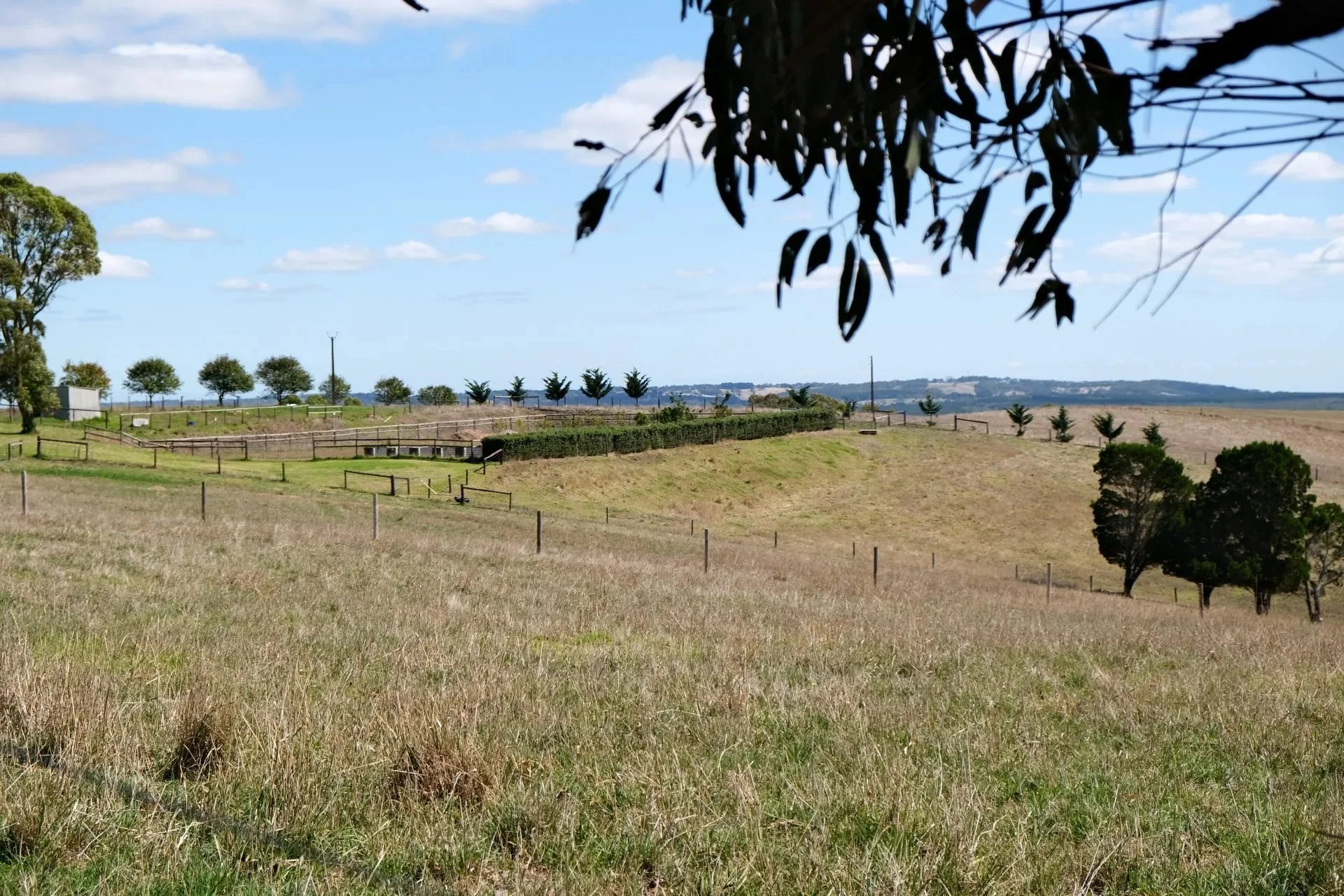The Feel of a Word: paddock
The word paddock is a variant of the word parrock which exists only in a number of British northern and southern dialects and means ‘a small enclosure’, especially one near a farmhouse. Its origin seems to lie in Germanic languages where there are a number of similar words meaning ‘a pen or fold or enclosure’.
There is an Australian paddock mentioned in 1808 which is of the English variety and is a small enclosure. Often it was convenient to have the horse or the milking cow confined next to the farmhouse and so a small enclosure was all that was required. By 1849 the paddock had expanded to many thousands of acres.
There was much excitement in 1951 about a paddock of oats:
Believed to be one of the largest areas ever sown to oats in one paddock, either in Victoria or South Australia, an Apsley man is engaged in the colossal task of sowing 1,200 acres.
It has taken six months to clear the area, aided by bulldozers, tractors and ploughs. Following the clearing operations, three tractors were used in sowing down operations, which commenced 11 weeks ago, and, it is expected will continue for another fortnight. In traversing the paddock for the first time round, the machinery travelled just on seven miles.
This was one big paddock. But a google search to find the largest paddock in Australia turned up one that is 16,800 hectares. The completion of mustering takes a couple of days. Paddocks still grow in size.
There are various types of paddock. A horse paddock goes from 12 acres in 1838 to 400 hundred acres in 1841. That the paddock is well fenced is an important piece of information to offer in advertising. A cultivation paddock was, in the advertising of the early 1800s, listed separately from the other paddocks which required fencing.
There is an account in the Bacchus Marsh Express of 1901 of a police paddock which was proving to be a bit of an eyesore.
Mr Staughton MLA, said he held in his hand a petition, numerously signed, asking the Council to get the police paddock at Maddingley bridge sold by auction. The paddock was over-run with M’Gregor thistles, star thistles, and boxthorn. A few horses were there occasionally… A swamp would be better for horses,
Mr Duggan: The Police Department says it is swampy.
Mr Staughton: There are no leeches there, they are all down in Gippsland; some 2-legged ones.
The meeting carried on after this casual swipe at the residents of Gippsland with great determination to see the police paddock gone.
A Rosewood Paddock, listed in 1906 as upwards of 1000 acres, was described as having ‘long been known as one of the best fattening paddocks in the locality’. Similar to the fattening paddock - in that occupation of it was usually temporary - was the accommodation paddock. As the Launceston Examiner explained in 1910, the accommodation is needed for ‘fats’, that is fat cattle about to be shipped to market with the shipper paying an agistment fee.
Of related interest is the transfer to the Australian scene of the English common, an area shared by the community where stock could be grazed. The common survives only as an archaic feature of historic towns. The problem was that communal ownership led to communal neglect as related in this story from the Wagga Wagga Express of 1907:
The town common is at present of no use whatever to the town. It is unfenced, covered with scrub, and is really a natural breeding place for rabbits. The trouble in getting trustees to act in the controlling of the Coolamon common is that they are held responsible for the destruction of rabbits, therefore no townsman will act as a trustee.
Somewhere between the wars, town commons became tennis courts and cricket pitches.
Paddocks were often characterised by the crop that was grown there – lucerne paddock, corn paddock, pasture paddock, wheat paddock, grass paddock. Or by the stock that grazed there – cow paddock, sheep paddock, poddy paddock. Or by the purpose, as in an isolation paddock, resting paddock, night paddock, or by the location, as in home paddock, hill paddock, bush paddock.
There is, of course, the long paddock which is a paddock belonging to everyone and no one. This is the road along which drovers take cattle. Cattle owners may well release animals into the long paddock if feed is scarce in the regular ones. There is nothing so dismal as a dying paddock, as described in the Canberra Times in 1994:
It is a forlorn sight, the dry wind rustling the dry grass, the thick red earth cracked and parched: it whispers ruin and desolation.
Finally there is the top paddock, the paddock closest to the homestead. From which we get the humorous phrase to have kangaroos in the top paddock. To be crazy.
